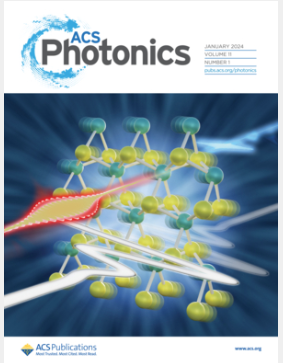Quantifying the Accuracy and Precision of the Transition Dipole Moment Alignment from Realistic Angular Emission Data
IF 6.5
1区 物理与天体物理
Q1 MATERIALS SCIENCE, MULTIDISCIPLINARY
引用次数: 0
Abstract
Optoelectronic device efficiency depends on the effective orientation of its photoluminescent transition dipole moment(s). This orientation is typically quantified indirectly by fitting the angular emission pattern of a material. However, the accuracy and uncertainty of this procedure are unknown, and thus, the predicted efficiency of a device has the potential to be extremely inaccurate. Here, we quantify the inherent accuracy and precision of finding the orientation of transition dipole moment(s). We created artificial data sets of varying transition dipole moment alignments, refractive indices, and thicknesses and used statistical models to determine the fit accuracy and associated confidence intervals. The inherent confidence intervals are inconsistent across transition dipole moment alignments and samples: uncertainty increases for more horizontally aligned dipoles and for higher refractive indices, meaning that quantum-confined semiconductor films will inherently have a less precise fit. We then showed that accurately fitting the transition dipole moment alignment requires adequate knowledge of the film parameters or computationally expensive fitting methods. Finally, we incorporated realistic nonidealities into our generated data sets that led to extremely inaccurate predictions of the true transition dipole moment alignment, with some cases showing 10–30° difference from the true angle. To address this, we developed a new weighting mask that reduced these inaccuracies to be within a few degrees for most cases. Through this work, we provided a framework to more accurately quantify the transition dipole moment alignment and the uncertainty of the associated fit, enabling better predictions of material properties and future device performance.

从实际角发射数据量化跃迁偶极矩对准的精度和精度
光电器件的效率取决于其光致发光跃迁偶极矩的有效取向。这种取向通常是通过拟合材料的角发射模式间接量化的。然而,这个过程的准确性和不确定性是未知的,因此,设备的预测效率有可能是非常不准确的。在这里,我们量化了寻找跃迁偶极矩方向的固有准确性和精度。我们创建了不同跃迁偶极矩对准、折射率和厚度的人工数据集,并使用统计模型来确定拟合精度和相关的置信区间。固有的置信区间在过渡偶极矩排列和样品之间是不一致的:对于水平排列的偶极子和更高的折射率,不确定性增加,这意味着量子受限的半导体薄膜将固有地具有较不精确的拟合。然后我们表明,准确地拟合跃迁偶极矩对准需要足够的薄膜参数知识或计算昂贵的拟合方法。最后,我们在生成的数据集中加入了现实的非理想性,这导致对真实跃迁偶极矩对准的预测非常不准确,有些情况下与真实角度相差10-30°。为了解决这个问题,我们开发了一种新的加权掩模,可以在大多数情况下将这些不准确性降低到几度以内。通过这项工作,我们提供了一个框架,可以更准确地量化过渡偶极矩对准和相关拟合的不确定性,从而更好地预测材料特性和未来器件性能。
本文章由计算机程序翻译,如有差异,请以英文原文为准。
求助全文
约1分钟内获得全文
求助全文
来源期刊

ACS Photonics
NANOSCIENCE & NANOTECHNOLOGY-MATERIALS SCIENCE, MULTIDISCIPLINARY
CiteScore
11.90
自引率
5.70%
发文量
438
审稿时长
2.3 months
期刊介绍:
Published as soon as accepted and summarized in monthly issues, ACS Photonics will publish Research Articles, Letters, Perspectives, and Reviews, to encompass the full scope of published research in this field.
 求助内容:
求助内容: 应助结果提醒方式:
应助结果提醒方式:


